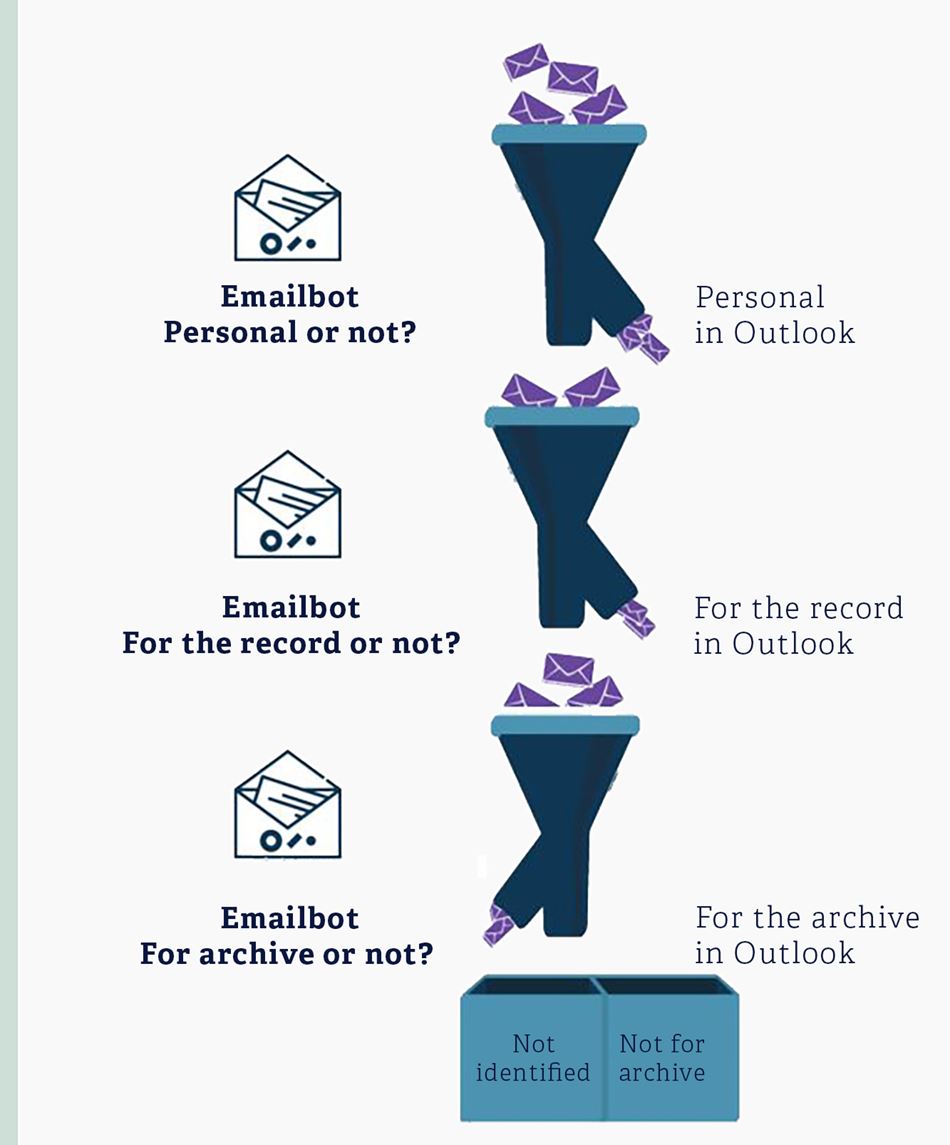About the project
Simplifai has developed a digital archive employee – called DAM for the Norwegian acronym – to help administrators in the public sector record and archive documentation sent via e-mail. As the public sector handles key social functions, the sector has its own requirements for the handling of documents. Records must be kept of relevant correspondence, so that the public can request access to it and see what is going on. Documentation that is deemed to have archival value, and that has been used in the administrative process, must be preserved for posterity through archiving.
Simplifai was established in 2018, with the goal of making artificial intelligence simple and available to everyone. In 2022, Simplifai has approx. 140 employees and supplies various digital assistants worldwide. The main customer sectors have been the public sector, as well as banking, insurance and finance. What all of these sectors have in common is stringent regulatory requirements. That is why Simplifai is actively working to develop secure solutions based on artificial intelligence for the automation of work processes related to digital communication and documents.
The project wanted to invite a public body that could share their knowledge of and experience with archiving and data protection in practice. Resource persons from the Norwegian Water Resources and Energy Directorate (NVE) provided useful perspectives from their role as a potential buyer of DAM.
Why do we need DAM?
Back when we all sent letters through the postal service, skilled archivists in the public sector ensured that all all incoming and outgoing letters were registered under the appropriate heading. The administrators themselves did not have to consider the matter of record-keeping and archiving. Today, however, a great deal of correspondence comes directly to administrators via e-mail. In addition, there is a lot of internal communication taking place on other platforms. The amount of documentation has increased and appears rather overwhelming to many of us.
With digitalization, the responsibility for archiving and record-keeping has largely shifted, from archivists to the administrators themselves. According to a survey by Menon, the majority of administrators believe they are able to archive less than 75 per cent of all important information.
Read the report: Mangelfull arkivering koster Norge dyrt (arkivverket.no – in Norwegian only)
And this occurs at every level. In a report on archiving and transparency in public administration, the Office of the Auditor General points out that inadequate archiving and record-keeping in key cases erodes the foundation for public discourse and democratic access to information and control. Among other things, they point to the Coronavirus Commission’s conclusions that key parts of the interaction between the Norwegian government and parliament in the response to the Covid-19 pandemic have not been documented. “The lack of documentation and archiving weakens access to knowledge of and insight into central assessments and decisions that were made in the response to the pandemic, deemed the biggest national crisis since World War II.”
Read the report from the Office of the Auditor General here (riksrevisjonen.no – in Norwegian only)
How does DAM work?
DAM is a solution that helps the employee select which e-mails to archive and enter into the public record. It also aids in the actual recording and archiving process.
The solution has been developed using machine learning. The method used in this project is called natural language processing (NLP), specifically natural language understanding (NLU), which means that the solution recognizes text within the e-mail, including text in attachments, if relevant. A new development for the digital employee is that machine learning (NLU/NLP) has been combined with optical character recognition (OCR).
The digital employee consists of three modules – so-called bots. Before the digital employee suggests what to do with the e-mail, each bot considers one of the following questions:
- Is the e-mail personal in nature?
- Should the e-mail be entered into the record?
- Should the e-mail be archived?

Based on these assessments, an e-mail will be tagged in categories of personal/not personal, whether it should be entered into the record and whether it should be archived. If a human employee agrees with the assessment, the e-mail can be tagged in the category “Archiving OK”. The employee will then personally approve the archiving of the e-mail. Furthermore, the employee may personally archive the e-mail, or all e-mail tagged with “Archiving OK” can be archived by the digital archive assistant the following night, based on the employee’s actions.
The employee may choose to add personal rules that exempt certain inbox content from being processed by DAM. This could include exempting certain senders or certain key words in the subject field or e-mail body.
Simplifai’s goal is for the digital employee to contribute to
- more e-mails being entered into the record and archived
- greater legal protection for all parties who are in contact with the public sector
- better control functions for the public sector and the media
- freeing up time for employees – this time is better spent on core tasks